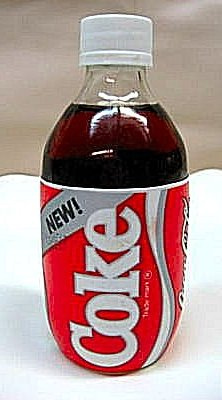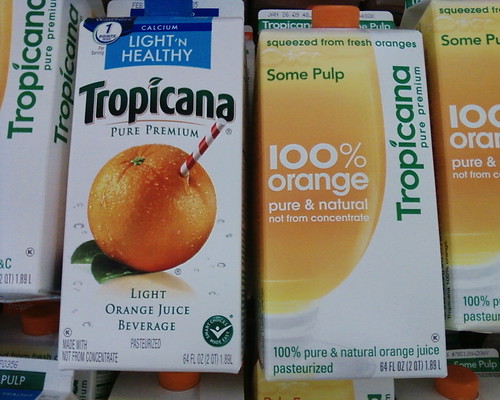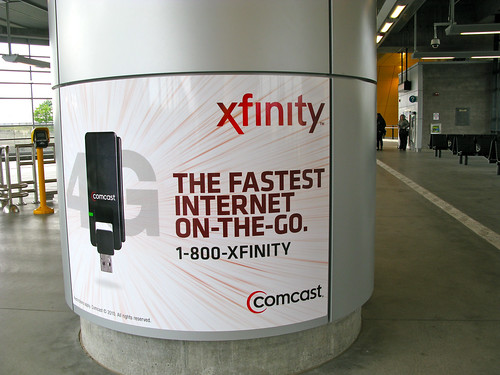When it comes to business marketing, everything rides on company’s brand- it’s unique identity based on words, imagery, emotion, and reputation. It is through the brand that a customer gets to know a particular product or service, and as such, it is one of a company’s biggest intangible assets. But as the following collection of rebranding failures attests, many bigger corporations seem to be of touch both with the power and dynamics that lie behind their corporate brands as well as the customers it caters to.
New Coke
In an apparent attempt to appeal to younger consumers, Coca-Cola rebranded it’s flagship softdrink with the introduction of New Coke in 1985. Consumer backlash soon followed, with some people even trying to buy the old product from overseas markets where the new formula had not yet reached. Several months after debuting New Coke, Coca-Cola retreated, bringing back the original formula under the moniker, Coca-Cola Classic.

Accenture
Shortly after it broke away from its namesake, accounting firm Arthur Andersen, Andersen Consulting was in need of a new brand name. They held a company-wide competition and evetually settling on the name Accenture, a combination of the phrase “accent on the future.” When the new title was officially introduced in January 2001, critics derided it as generic, nonsensical, and meaningless, and it was regarded as one of the worst corporate rebranding attempts of all time. But the timing proved to be fortuitous, however, after the Enron scandal broke out in October of that same year permanently damaging the image of its accounting firm, Arthur Andersen.

Altria Group
When your products are known to cause adverse health effects leading to premature death, it makes sense that you’d want to change your brand name. In January 2003, Philip Morris Co. Inc., the world’s largest cigarette maker known for brands such as Marlboro and Virginia Slims, changed its name to the Altria Group. But instead of creating distance, the name change generated tremendous backlash among consumers who saw the move as yet another attempt of the tobacco company to sidestep responsibility for the harm that its products cause.
The Shack
“Our friends call us The Shack” That’s the byline that accompanies Radio Shack’s attempt to reposition itself as a cool cat in the consumer electronics industry. The ad campaign started inAugust 2009 which featured several short, rather quirky videos was ridiculed by consumers and marketing experts alike who pointed out that no one calls Radio Shack by that name and that the new label reminds people of a place where very bad things happen.
SyFy
In another misguided attempt to position a brand as cool and cutting edge, in 2009 the SciFi Channel took on the new moniker SyFy. As justification for the odd change, the company offered two explanations: they couldn’t trademark the term “sci-fi” and that this is how someone in the 18-to-34 population would text it. Little did they know that “syfy” is a slang term for the STD syphilis.

Pepsi Cola and Tropicana Orange Juice
Strike two… In an attempt to remake some of its core beverage brands, PepsiCo partnered with design and branding company, the Arnell Group. The new designs were released in the beginning of 2009, namely to the company’s Tropicana Pure Premium orange juice line and it’s flagship Pepsi Cola line of softdrinks. The move generated an outpouring of consumer outrage, confusion, and derision.
The Tropicana carton was striped of the iconic image of an orange with a straw stuck in it, and was replaced by a generic-brand look. Sales instantly fell 19 percent, and the company announced a return to the previous design.
The Pepsi Cola logo underwent a minor alteration but generated a negative backlash when it was associated with a 27-page manifesto entitled “Breathtaking,” in which the tweaked image is compared to the Mona Lisa, the earth and its gravitational pulls, and the entire structure of the universe. Though the logo remained, so did the negative press.

The Gap
If it ain’t broke, don’t fix it. In October 2010, clothing retailer, Gap abandoned it’s ubiquitous logo consisting of a blue box with “GAP” written in white inside, for a slightly altered new version described by Marka Hansen, Gap’s president for North America, as a “…journey to make Gap more relevant to our customers.” The customers didn’t share his view, however, and a subsequent online blintz of criticizm and outrage forced the company to do an about-face within a week.

Xfinity
The company that everyone loves to hate, cable-television and Internet conglomerat Comcast is sinonomous with poor customer service and overcharging and is a frequent entry on various worst company lists. In a perplexing attempt to distance itself from these flattering associations, in Feburary 2010, Comcast began marketing its Internet video services under the new name, Xfinity, leaving customers and criters to wonder what exactly the name means. As a writer for Time quipped, “Will the name change work? Probably not, but at least it’ll sound a bit edgier when you’re put on hold … with Xfinity.”
BP Oil
Seen by consumer advocates and environmentalists as a “greenwashing” tactic, in 2000, BP tried to show a greener side with new “sunflower” logo and the slogan “Beyond Petroleum.” But that image was shattered beyond repair with the 2010 Deepwater Horizon opil spill that left a nation with unforgetable images of crude oil spewing out into the Gulf of Mexico and birds and sealife covered in oil.

Buffalo Sabres
The fans of the National Hockey League team the Buffalo Sabres are no strangers to rebranding. After the team’s owners ditched its traditional logo, a buffalo jumping over two crossed swords, in 1996 in favor of a menacing looking beast, the second logo change in 2006 was a bit too much. Derided as a banana “buffaslug” and “the angry cashew nut,” the teams owners finally took the hint and reintroduced an updated version of the classic logo for the 2010 ice hockey season.

Sources:
http://www.mainstreet.com/slideshow/small-business/marketing/6-product-rebranding-flops
http://www.time.com/time/specials/packages/completelist/0,29569,1914815,00.html



